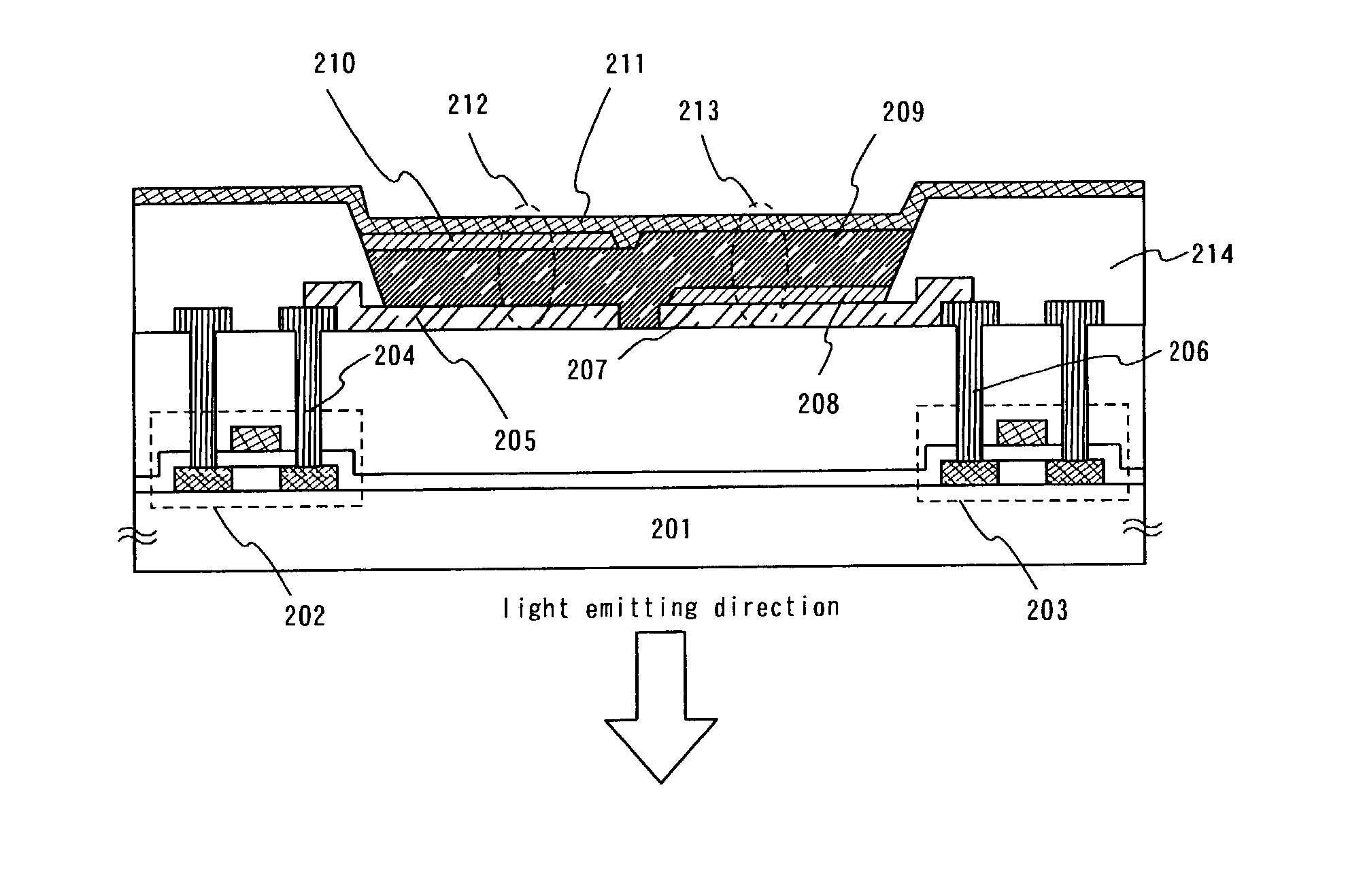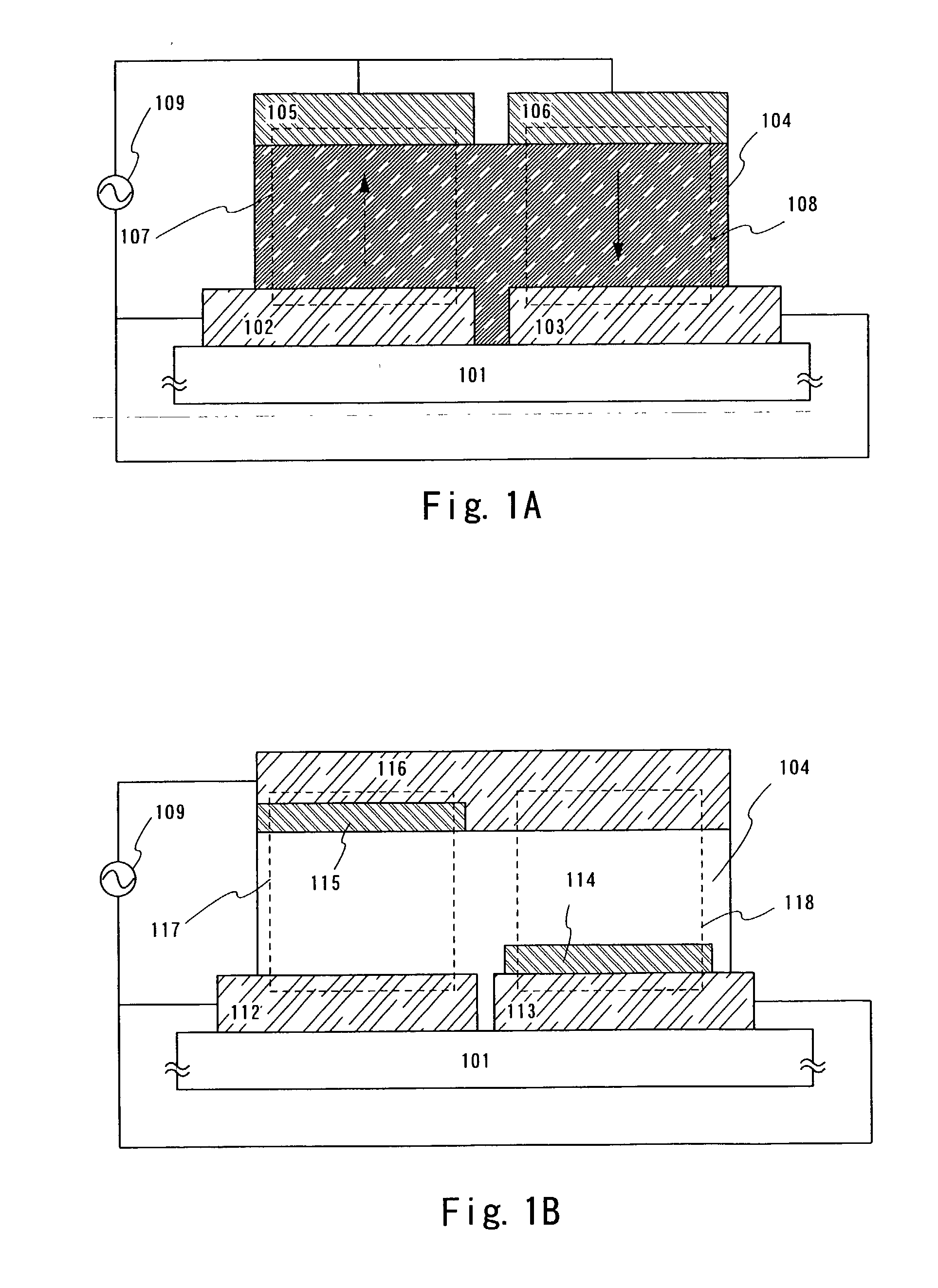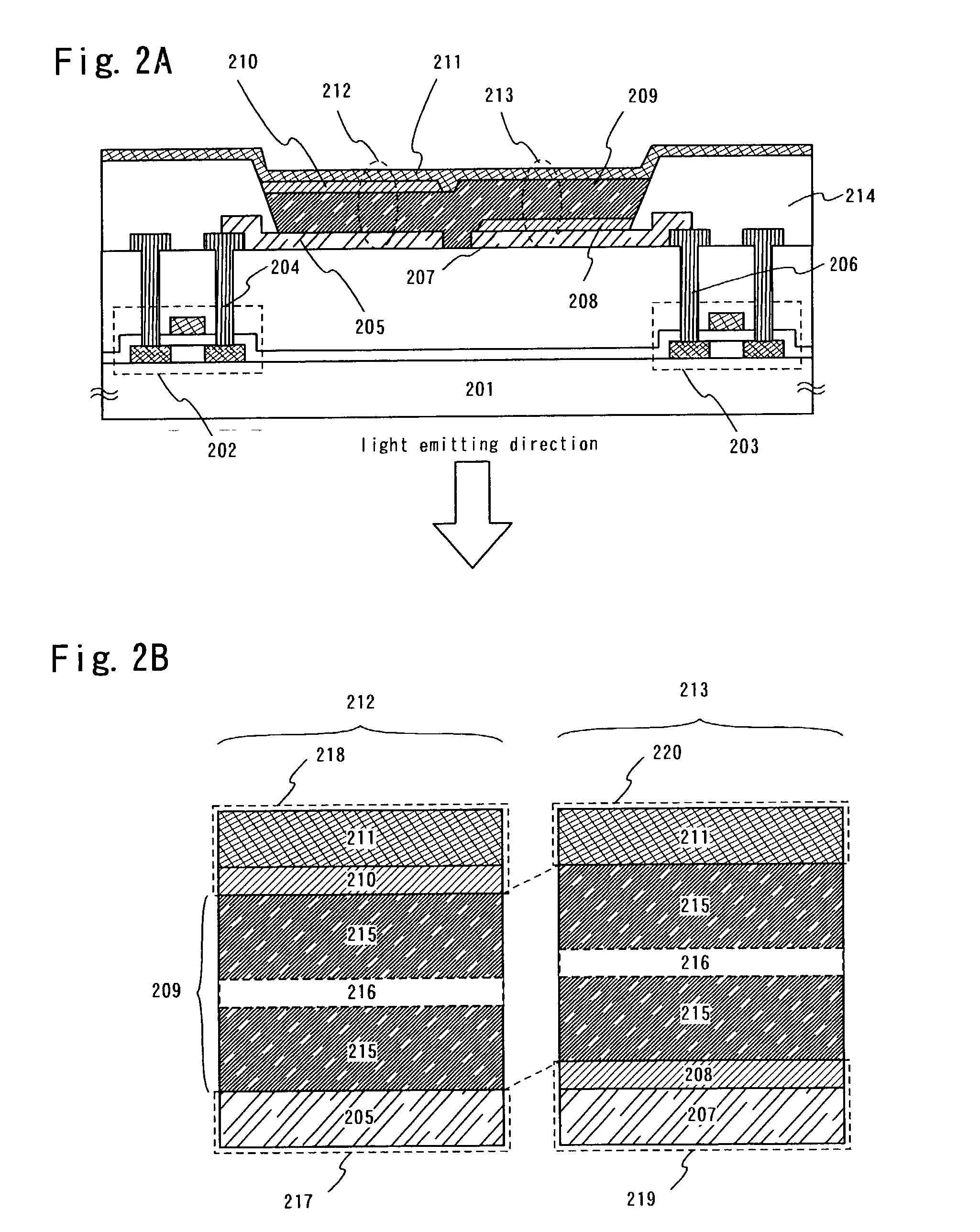Light emitting device and manufacturing method thereof
a technology of light-emitting devices and manufacturing methods, which is applied in the direction of organic semiconductor devices, identification means, instruments, etc., can solve the problems of reducing brightness, difficult to generate noise, and thus dark brightness
- Summary
- Abstract
- Description
- Claims
- Application Information
AI Technical Summary
Benefits of technology
Problems solved by technology
Method used
Image
Examples
embodiment 1
[0071] Embodiment 1
[0072] An active matrix structure in which TFTs (thin film transistors) and light emitting elements are electrically connected is explained in Embodiment 1. There is explained a case in which pixel electrodes of the light emitting elements are formed by transparent materials, and light developing in organic compound layers is extracted from the pixel electrodes (so-called bottom emission).
[0073] A cross sectional diagram of a pixel forming a pixel portion of a light emitting device is shown in FIG. 2A. Two types of TFTs (electric current control TFT) are formed on a substrate 201, a first electrode 205 is electrically connected to a TFT1 (202) through a wiring 204, and a second electrode (2) 207 is electrically connected through a wiring 206. Note that the TFT1 (202) is formed by a p-channel TFT in Embodiment 1, and the TFT2 (203) is formed by an n-channel TFT.
[0074] Note that the wiring 204 and a connection portion of the first electrode 205, and the wiring 206 a...
embodiment 2
[0096] Embodiment 2
[0097] A structure in which light developing in an organic compound layer is extracted from an opposing electrode (so-called top emission), and in which the opposing electrode is formed by a material having transparency, differently from Embodiment 1, is explained in Embodiment 2.
[0098] A cross sectional diagram of a pixel forming a pixel portion of a light emitting device is shown in FIG. 3A. Two types of TFTs (electric current control TFTs) are formed on a substrate 301, a first electrode 305 is electrically connected to a TFT1 (302) through a wiring 304, and a second electrode (2) 307 is electrically connected through a wiring 306. Note that the TFT1 (302) is formed by a p-channel TFT, and the TFT2 (303) is formed by an n-channel TFT in Embodiment 2.
[0099] Note that the wiring 304 and a connection portion of the first electrode 305, and the wiring 306 and a connection portion of the second electrode 307 are covered by an insulating layer 314 made from an insula...
embodiment 3
[0119] Embodiment 3
[0120] A case of a top emission light emitting device which is the same as the top emission light emitting device shown in Embodiment 2 and has an element structure different therefrom is explained in Embodiment 3.
[0121] A cross sectional diagram of a pixel forming a pixel portion of a light emitting device is shown in FIG. 4A. Two types of TFTs (electric current control TFTs) are formed on a substrate 401, a first electrode 405 is electrically connected to a TFT1 (402) through a wiring 404, and a second electrode (2) 407 is electrically connected through a wiring 406. Note that the TFT1 (402) is formed by an n-channel TFT, and the TFT2 (403) is formed by a p-channel TFT in Embodiment 1.
[0122] Note that the wiring 404 and a connection portion of the first electrode 405, and the wiring 406 and a connection portion of the second electrode 407 are covered by an insulating layer 414 made from an insulating material as in Embodiment 1. Note also that the insulating lay...
PUM
 Login to View More
Login to View More Abstract
Description
Claims
Application Information
 Login to View More
Login to View More - R&D
- Intellectual Property
- Life Sciences
- Materials
- Tech Scout
- Unparalleled Data Quality
- Higher Quality Content
- 60% Fewer Hallucinations
Browse by: Latest US Patents, China's latest patents, Technical Efficacy Thesaurus, Application Domain, Technology Topic, Popular Technical Reports.
© 2025 PatSnap. All rights reserved.Legal|Privacy policy|Modern Slavery Act Transparency Statement|Sitemap|About US| Contact US: help@patsnap.com



